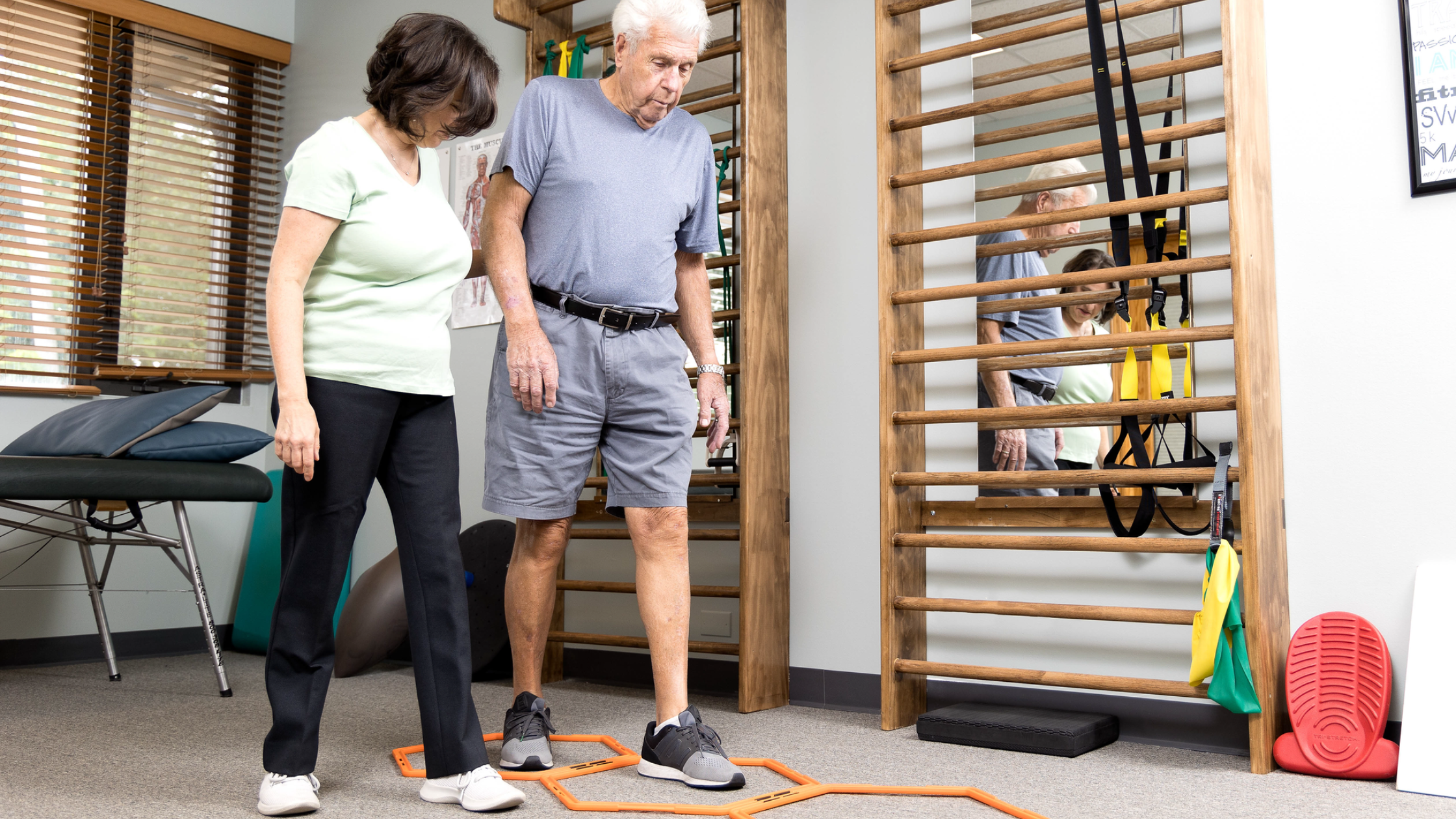Have you ever lost your footing on stairs, wet/icy pavement, or the floor of your own bedroom as you get up at night—causing you to fling your arms out to try and catch yourself before landing and raising your heart beat to cope with the suddenly stressful situation? Nearly everyone, regardless of age, has experienced these scenarios, probably multiple times in their lives. Everyone takes their sense of balance for granted because this sense seems to be automatic, until they are in danger of losing their balance.
Two years ago, at age 53, I slipped on my wet kitchen floor, twisting my leg behind me and landing hard on my back and my knee. My husband had to help me up from the floor, walk me to the couch where I laid down for 20 minutes to recover from the shock. My knee pain persisted for 3 months.
My 20-year-old son typically leaps and bounds up and down the stairs. Last year, he missed a step and slid down on his back. Within seconds, he was up and moving about as if nothing had happened.
Ed, an 89-year-old man, walks with a cane and tripped over a rug. He landed on his side and bruised his leg. Luckily, he didn’t break anything, but he now has to use a walker.
Falling can happen to anyone at any age, but the older we get, the greater the possibility of falling and getting a serious injury. Older folks simply cannot bounce back from a fall like my 20-year-old son did.
What is Balance?
Have you ever paused to appreciate how effortlessly (or not) you maintain balance while carrying out your daily activities? From walking to bending and even picking up objects, these movements rely on the remarkable role of proprioception in our bodies.
Proprioception is our body’s natural sense of position, movement, and orientation. This sense coordinates with our muscles, joints, and nervous system to assist with maintaining balance, posture, and coordination. Amazingly, we use proprioception during all our daily activities, such as walking, sitting, reaching, and picking up objects.
Here are some ways proprioception assists us during our daily movements:
- Getting up and sitting down with ease: Discover how proprioception helps us maintain stability while transitioning from sitting to standing and vice versa. Learn about the intricate coordination between muscles, joints, and the nervous system during these movements.
- Navigating obstacles and avoiding falls: Understand how proprioception enables us to detect and respond to obstacles in our path. Emphasize the importance of proprioceptive feedback in avoiding accidents and falls.
- Bending and picking up objects: Explore how proprioception help us maintain balance and stability while bending down to pick up objects. Highlight the connection between proprioceptive awareness and preventing injuries during these movements.
- Moving on uneven surfaces: Learn about the challenges posed by uneven terrain and how proprioception helps us maintain balance and adjust our movements accordingly. Emphasize the adaptability of our proprioceptive system in various environments.
Bodily Systems at Work
Your balance is achieved through the integration of multiple bodily systems: visual, vestibular, nervous, and musculoskeletal.
- Visual System: Your eyes provide information about the environment and location in the space around you so you can see and prepare for dangers, obstacles and changes. This is why it can be difficult to keep your balance in the dark.
- Vestibular System (inner ear): Your inner ears provide information about the current position of your head at rest and its movement in space as you move. This system may be affected if you feel off balance when standing up or walking as well as when your inner ear is overwhelmed from too many rapid changes in position (e.g., riding a rollercoaster), causing you to feel nauseous, dizzy or to have vertigo.
- Nervous system: Proprioception is a built-in mechanism that provides your nervous system with the information to know where your body, arms and legs are in space by sensing pressure changes in your joints. This is why when you close your eyes and then lift your arm and wave it above your head, for example, you automatically know where your arm is in space above you.
- Musculoskeletal: Your muscles and joints provide you with support in order to move around efficiently.
So, how do you know if you have balance issues?
There are a couple of simple tests you can do to determine if your balance is in good condition or if it needs improvement. These tests can also be used as exercises to improve your balance, prevent falls, and improve independent living when practiced regularly at any age.
Check out my free eBook, Better Balance and Fall Prevention Guide to learn how to do these tests on yourself at home.







Leave a Reply